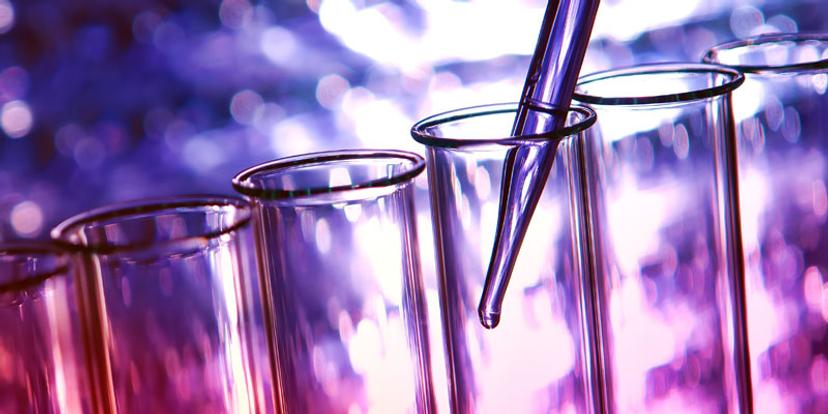Webinar Highlights: Practical Tips and Hints for Best Titration Results
4 Jan 2018


Precision, accuracy and transparency are all important for titration results. In a recent SelectScience® webinar, titration experts Valeria Gärtner, Mettler Toledo GmbH, and Bettina Straub-Jubb, Merck KGaA, examined the most important aspects of titer determination, showing how to fulfil quality assurance requirements and offering expert tips to improve your titration process.
Read on for highlights from the Q&A session, and if you missed it, watch the webinar on demand.
SS: What is the best choice for filling electrolyte when titrating or determining pH of methanolic/ethanolic solutions?
VG: Normally if you work in non-aqueous medium for titration you also use non-aqueous reference electrolytes in the electrode, for example 1 molar lithium chloride in ethanol.

SS: Is it necessary to add an indicator when performing a potentiometric titration with a titrator?
VG: No, it is not necessary. If you work with a pH electrode you don’t need any indicator. The electrode will measure the change in the pH value (or mV, mollivolts) and detect the endpoint either defined as such, for example pH 4, or equivalence point without any indicator. Of course, you can add color indicator if you don’t want to work with a pH-sensor but for example with METTLER TOLEDO Phototrode DP5, which measures the light absorption.
SS: What's the titre in a titration...is it the volume at the end point/equivalence point?
BS: A titre is a correction factor, which means it corrects all the results, it adapts uncertainties from instrument and environment to the real concentration of the volumetric solution. A titre we determine with a standard. So, the standard being exactly known the assay of the standard, and we use to determine the correct concentration of the volumetric solution and additionally we also can correct for temperature variations in the laboratory, uncertainties of the burette, electrode, handling, balance and instrument. We use this to then correct the results, the instrument usually does this automatically. A titre usually is 1 when everything is 100% perfect, but normally a titre is maybe 0.9877 or something like that, then we use this factor to correct the results.
SS: How long is an opened volumetric solution stable?
BS: This depends on the volumetric solution and its properties. So, we have different kinds of volumetric solutions, some are quite stable, some are unstable. When you open a volumetric solution, as long as it is originally closed the value will not change for the concentration we mention in the certificate. But if it is opened, it will be influenced from environmental oxygen, carbon dioxide, microbes and evaporation of water/solvent. Depending on the kind of solution, acids for example are quite stable and you can use them for one or two weeks with only a very minor change in concentration. But if you have an alkaline solution, sodium hydroxide or potassium hydroxide solution for example, they absorb carbonate from the environment and the concentration will increase because you get additional carbonate into our solution. Therefore, you always have to see what kind of solution you use. On the other hand, what is your environment? Is it very hot or humid? Where it would be less stable. Or do you have a steady temperature airconditioned lab where the lifetime of your volumetric solution would be extended.
SS: What should be the regular maintenance for electrodes used for non-aqueous solution titration?
VG: For pH electrodes used in non-aqueous medium the biggest problem is that the hydration layer of the sensitive part of the electrode is removed with the time. This hydration layer is necessary to have stable and correct signal though. To re-build the hydration layer of a pH electrode you should condition it in a buffer solution pH 4-5 (pure or diluted buffer pH 4 solution). How often the conditioning has to be done and the exact time of conditioning depends on the nature of the samples and the working medium. It is also recommended to leave the pH electrode overnight in the buffer solution pH 4 – 5.
SS: How critical is it to have good mechanical stirring during a titration method? Do air bubbles in solution cause problems?
VG: Since we add some chemicals which have to react with each other, it’s very important that the solution is stirred properly. But it is not necessary to stir it so vigorously that you have a lot of air / CO2 getting into the solution. The influence of the air / CO2 depends on your sample and what kinds of chemicals are used in the titration. In case of most of the samples the air bubbles will not influence the results. Real problems can be caused when the stirring is so vigorous that the sensitive part of the electrode would be surrounded by air instead of the sample solution. This would result in an unstable or wrong signal and thus in no or wrong results.
Watch the full webinar on demand here, or discover more exclusive webinars here.
Do you use any of the products mentioned in this article? Is there a product you couldn’t live without? Write a review today for your chance to win an Amazon voucher worth $400 or an iPad Air®.
